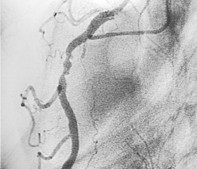Peer Reviewed
Feature Article Cardiovascular medicine
Myocardial infarction: improving patient outcomes
Abstract
Early recognition of myocardial infarction – by both patient and doctor – is an essential part of the chain of survival. This article outlines a management framework for ST elevation and non-ST elevation myocardial infarction.
Key Points
- The greatest opportunity to improve outcomes after myocardial infarction lies in reducing patient delay. Early recognition of symptoms by patients allows for emergency assistance.
- Many patients with myocardial infarction or unstable angina present to their local doctor rather than a hospital. All adults should be educated that the appropriate response to chest discomfort lasting more than 10 minutes is to call an ambulance.
- All undiagnosed chest discomfort in adults over 30 years of age should be treated as possible coronary disease until proven otherwise.
- Treatment for STEMI (ST elevation myocardial infarction) includes aspirin and emergency reperfusion therapy with either angioplasty or fibrinolytic therapy.
- NSTEMI (non-ST elevation myocardial infarction) carries a worse long term prognosis than STEMI. Treatment includes early antiplatelet and antithrombotic therapy followed by angiography, preferably within 24 or 48 hours.
Purchase the PDF version of this article
Already a subscriber? Login here.

